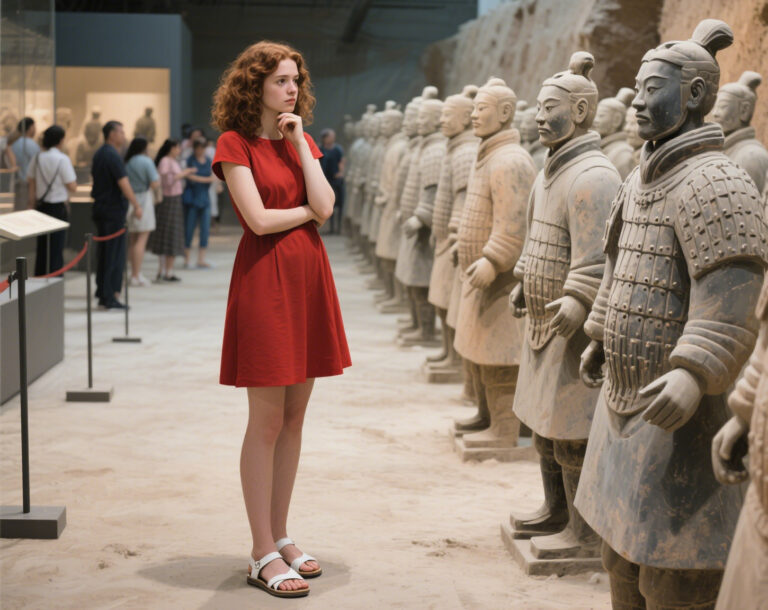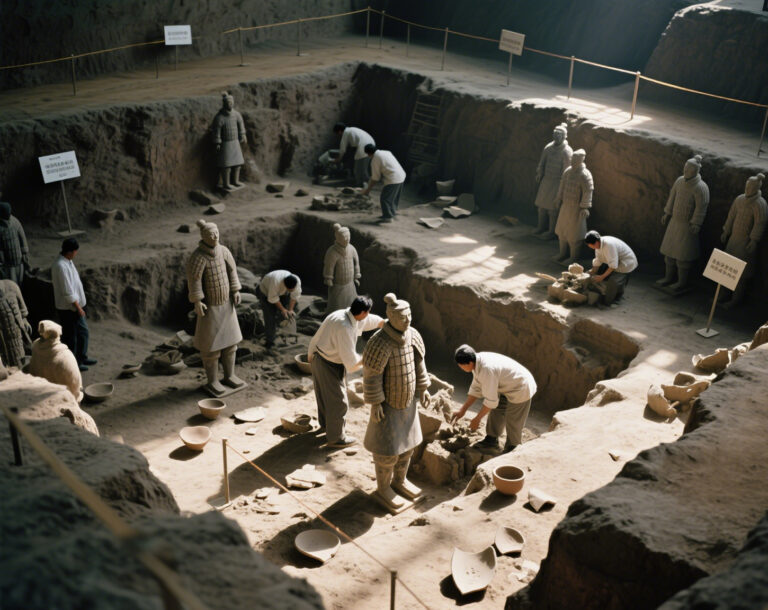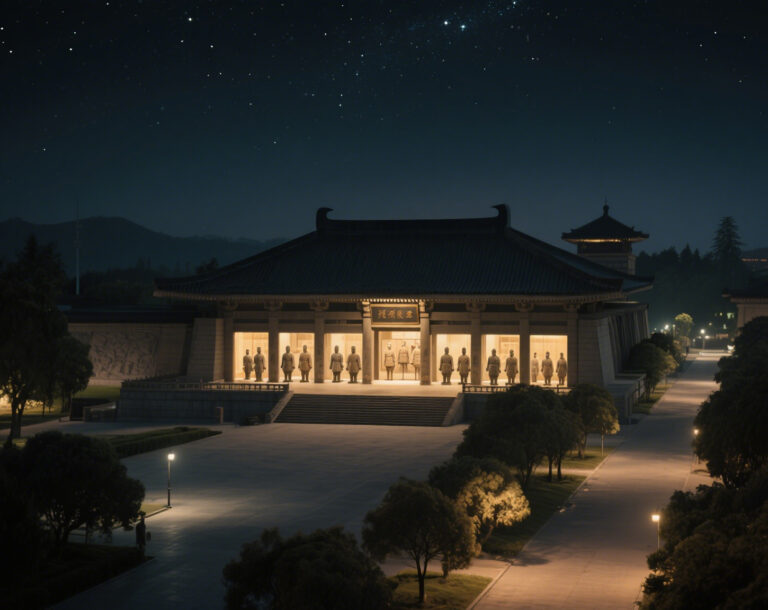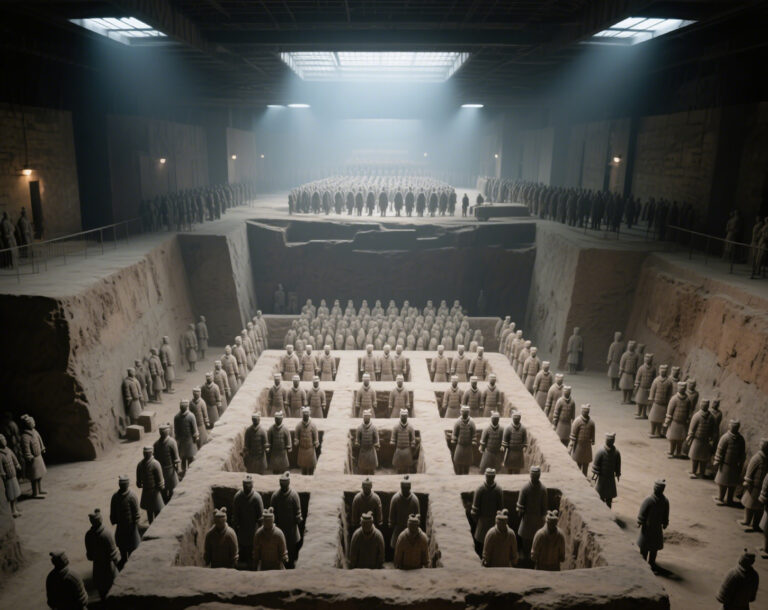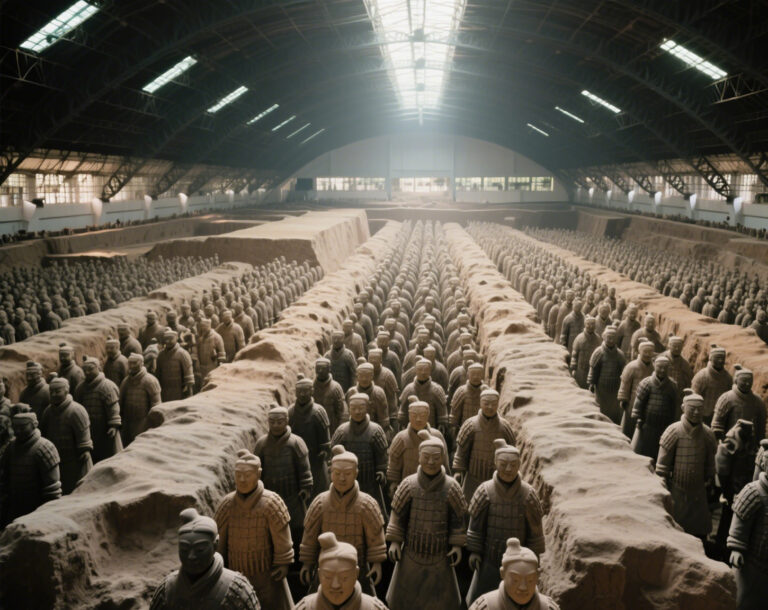Where are the Terracotta Warriors located? (Specific city/province)
Okay, buckle up, history buffs and curious travelers! You’ve heard of the mind-blowing Terracotta Army, that silent legion of thousands of clay soldiers guarding their emperor for eternity. But when you decide to pack your bags and jet off to see this UNESCO World Heritage site and one of the coolest things on the planet… where exactly do you point your GPS? Let’s solve this ancient mystery!
The Grand Reveal: Xi’an, Shaanxi Province!
Alright, drumroll please… 🥁 The magnificent Terracotta Warriors call Xi’an (西安), in Shaanxi Province (陕西省), China, their eternal home base.

Think of it like this:
- China: That’s the big, amazing country itself. (You got this part!)
- Shaanxi Province (陕西省 – Shǎnxī Shěng): Imagine this as a giant state smack dab in the very heart of China. It’s not on the coast like Shanghai or down south near Hong Kong. Nope, it’s more central-west, kind of like… well, if China were the USA, Shaanxi might feel geographically a bit like a mix of Texas (big, historically significant) and maybe Ohio or Missouri (central location, heartland vibes). It’s a province absolutely steeped in history – we’re talking ancient capitals, the starting point of the Silk Road, you name it. Shaanxi is basically China’s history textbook come to life.
- Xi’an (西安 – Xī’ān): This is the capital city of Shaanxi Province. And folks, Xi’an isn’t just any city. It’s one of the Four Great Ancient Capitals of China, having served as the imperial seat for 13 different dynasties! That’s more dynasties than you’ve had hot dinners! 🤯 Its history stretches back over 3,100 years. To put that in perspective, when Xi’an was already a thriving metropolis, Rome was still figuring out its toga sizes. So, saying “it’s old” is the understatement of the millennium. Think of it like China’s Rome, Athens, or maybe even a super-ancient Washington D.C. combined – a colossal historical heavyweight.
So, Xi’an is the City… But Where Exactly in Xi’an?
Hold your horses (or terracotta chariots)! The Terracotta Army isn’t actually chilling downtown next to the Starbucks and subway station (though that would be a sight!). They’re stationed about 40 kilometers (roughly 25 miles) east of the Xi’an city center.
The precise location is in the Lintong District (临潼区 – Líntóng Qū). Don’t worry about memorizing “Lintong” too hard; everyone just knows it as “where the Terracotta Warriors are outside Xi’an.” Getting there is a breeze:
- Taxi/Ride-hailing (DiDi): Easy peasy, tell the driver “Qin Bing Ma Yong” (pronounced roughly “Chin Bing Ma Yong”) and they’ll know. Takes about an hour depending on traffic.
- Tourist Bus: Super common and cheap, leaving from near the main train station or other tourist hubs in Xi’an. Look for bus #306 (also known as the Tourist Bus #5).
- Organized Tour: The most hassle-free way? Join one of the zillions of day tours from Xi’an. They handle transport, tickets, sometimes a guide, and lunch.
So, no need for Indiana Jones-style expeditions into the wilderness. It’s a very manageable, well-trodden path from the city to the warriors. Just don’t expect them to be in the city itself!
Why Here? Why Xi’an/Shaanxi? (A Quick Dip into Ancient Strategy)
Emperor Qin Shi Huang, the big boss who ordered this incredible army built, didn’t pick this spot randomly. Xi’an (known as Chang’an – 长安 – Cháng’ān – “Perpetual Peace” back then) was the capital of his Qin Dynasty and became the capital of the mighty Han Dynasty right after. Why?
- The Guanzhong Plain (关中平原): Xi’an sits in this incredibly fertile plain, surrounded by natural defenses – mountains and rivers. Think of it like a giant, easily defended fortress basin. Great for growing food to feed an empire and super hard for enemies to attack. Strategic genius!
- Feng Shui & Symbolism: The location was considered incredibly auspicious according to ancient principles. Mountains (like the Qinling range to the south) offered protection, rivers (like the Wei River) provided water and transportation. It was seen as the perfect “Dragon’s Lair” for an emperor.
- Qin’s Heartland: This was the core territory of the Qin state before it conquered everyone else. Burying the Emperor and his army here, near his capital, was the ultimate power move and statement of eternal control over his realm.
So, the Terracotta Army isn’t just in Shaanxi near Xi’an; they’re guarding the very cradle of a unified Chinese empire, in a location chosen for its power, protection, and symbolism. Pretty cool, huh?
The “Holy Smokes, What Did I Just Dig Up?!” Story (You Gotta Hear This!)
Okay, the where is crucial, but the how they were found is pure gold. It perfectly underscores the “hidden in plain sight” aspect of their location.
Fast forward from 210 BC to March 1974. We’re in a small village called Xiyang (西杨村) in Lintong, farmers are digging a well during a drought. One farmer, Yang Zhifa, and his buddies hit something hard. Not rock. Baked clay. They keep digging, uncovering fragments of terracotta… then a torso… then a head.
They had no idea what they’d found. Local legend said the area was haunted; some villagers were scared! They thought maybe they’d found old temple statues or kiln ruins. Thankfully, they reported it. Archaeologists rushed in… and their jaws hit the floor. They hadn’t just found a few statues; they’d stumbled upon Pit 1, the largest, containing thousands of life-sized warriors and horses in battle formation, guarding the tomb of the First Emperor himself, just over a mile away!
Imagine that! One minute you’re trying to get water for your crops, the next minute you’ve uncovered arguably the greatest archaeological find of the 20th century, rewriting history books and putting your little village (and Xi’an, and Shaanxi!) on the global map forever. Talk about a career change! 🤯 From farmer to accidental archaeological superstar! That well-digging spot is still marked within the museum complex today. It’s a reminder that the greatest wonders are often hidden just beneath our feet… even in the fields outside Xi’an.
Your Terracotta Adventure Toolkit: Visiting Xi’an
Okay, you know where it is. Now, how do you make the pilgrimage?
- Getting to Xi’an: Major international airports (like Beijing, Shanghai, Hong Kong) have direct flights to Xi’an Xianyang International Airport (XIY). Super easy! High-speed trains also zip there from all over China.
- Getting to the Warriors from Xi’an: As mentioned: Tourist Bus #306 (cheap, reliable), taxi/DiDi (convenient, fixed price on DiDi), or a tour (easiest, often includes extras like the Tomb of Qin Shi Huang mound or Huaqing Palace). DO NOT take random “black taxis” offering cheap rides – stick to official options.
- The Site Itself – The Emperor Qin Shi Huang’s Mausoleum Site Museum (秦始皇帝陵博物院): This is the official, mouthful-of-a-name. It consists of:
- Pit 1: The jaw-dropping main event. Largest, most warriors, the iconic view.
- Pit 2: Shows the battle formations more clearly, with kneeling archers, cavalry, etc. Less reconstructed, more “as found” feeling.
- Pit 3: The command post! Smaller, with high-ranking officers.
- The Exhibition Hall of Bronze Chariots: Houses the incredibly intricate, half-size chariots found near the tomb mound. Mind-blowing craftsmanship.
- The Tomb Mound of Qin Shi Huang: The actual burial mound. It’s a large, tree-covered hill. It has NEVER been excavated (technology isn’t ready, and there are concerns about preservation and potential booby traps described in ancient texts!). You can walk around it, feel its imposing presence, but no one goes inside. The warriors are the outer guard; the Emperor’s secrets remain locked within. Spooky and awe-inspiring!
- Guides are GOLD: Seriously, hire a licensed English-speaking guide at the site or book a tour that includes one. The sheer scale and detail are overwhelming. A good guide brings the warriors to life, explaining the different ranks, hairstyles, uniforms, weapons, and the incredible story behind it all. Worth every penny.
- Timing: Give yourself at least 3-4 hours, preferably half a day. It’s VAST. Go EARLY to beat the worst crowds (and the heat in summer). Avoid Chinese national holidays if possible – think Times Square on New Year’s Eve levels of crowded!
- Comfort: Wear SUPER comfy shoes. You’ll walk a lot. Bring water, sunscreen (if sunny), or layers (it can be cool inside the pits). A hat is useful.
The Verdict: Why Xi’an/Shaanxi is THE Place
So, to wrap this up tighter than a terracotta warrior’s topknot:
- The Terracotta Army isn’t just in China; it’s specifically guarding the tomb of China’s First Emperor, Qin Shi Huang.
- That tomb is located near the ancient capital city, Xi’an (西安).
- Xi’an is the capital of Shaanxi Province (陕西省), a region dripping with millennia of history, right in China’s central-west heartland.
- They were found accidentally by farmers in 1974 in the Lintong District, a short trip east of downtown Xi’an.
- This location was chosen over 2,200 years ago because it was the strategic and symbolic heart of the Qin Empire, protected and powerful.
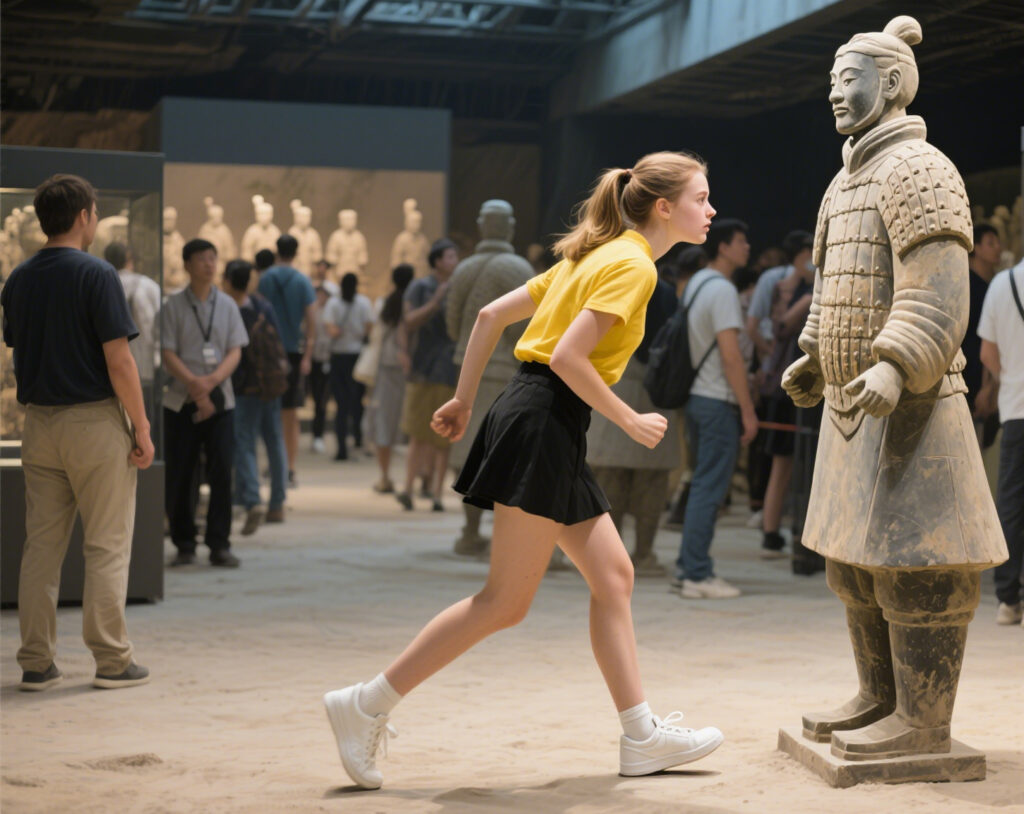
Xi’an isn’t just the address for the Terracotta Warriors; it’s the essential context. Seeing the warriors without understanding their connection to this ancient capital, this cradle of Chinese civilization, is like seeing a single puzzle piece without the picture. Xi’an itself is a treasure trove – climb the magnificent City Walls, bike on them at sunset, visit the Big Wild Goose Pagoda, stuff your face with incredible Muslim Quarter street food (those dumplings! That bread!), explore the history museums that put it all together.
So, future Terracotta explorers! Book your ticket to Xi’an, Shaanxi Province, China. Get ready to stand face-to-face (well, face-to-clay) with one of humanity’s most astonishing creations, hidden for centuries beneath the earth of a quiet field, just outside one of history’s greatest cities. It’s not just a sightseeing stop; it’s a journey straight into the epic, dramatic, and utterly fascinating heart of ancient China. See you in Xi’an! 🇨🇳✨


